SPECworkstation 3.0.2 Storage Benchmark
SPECworkstation benchmark is an excellent benchmark to test systems using workstation-type workloads. In this test, we only ran the Storage component, which is fifteen separate tests.
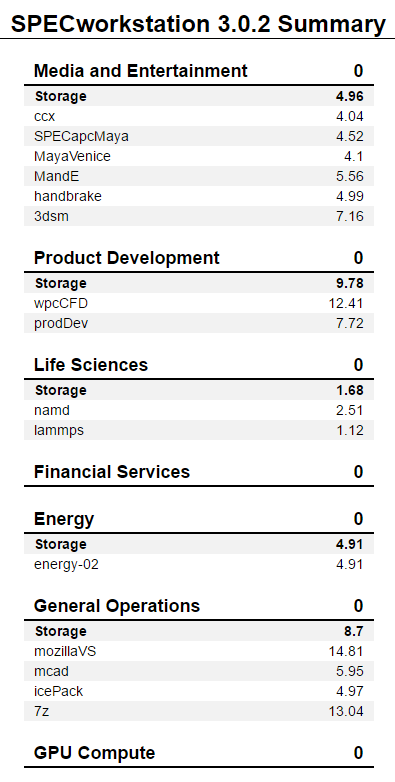
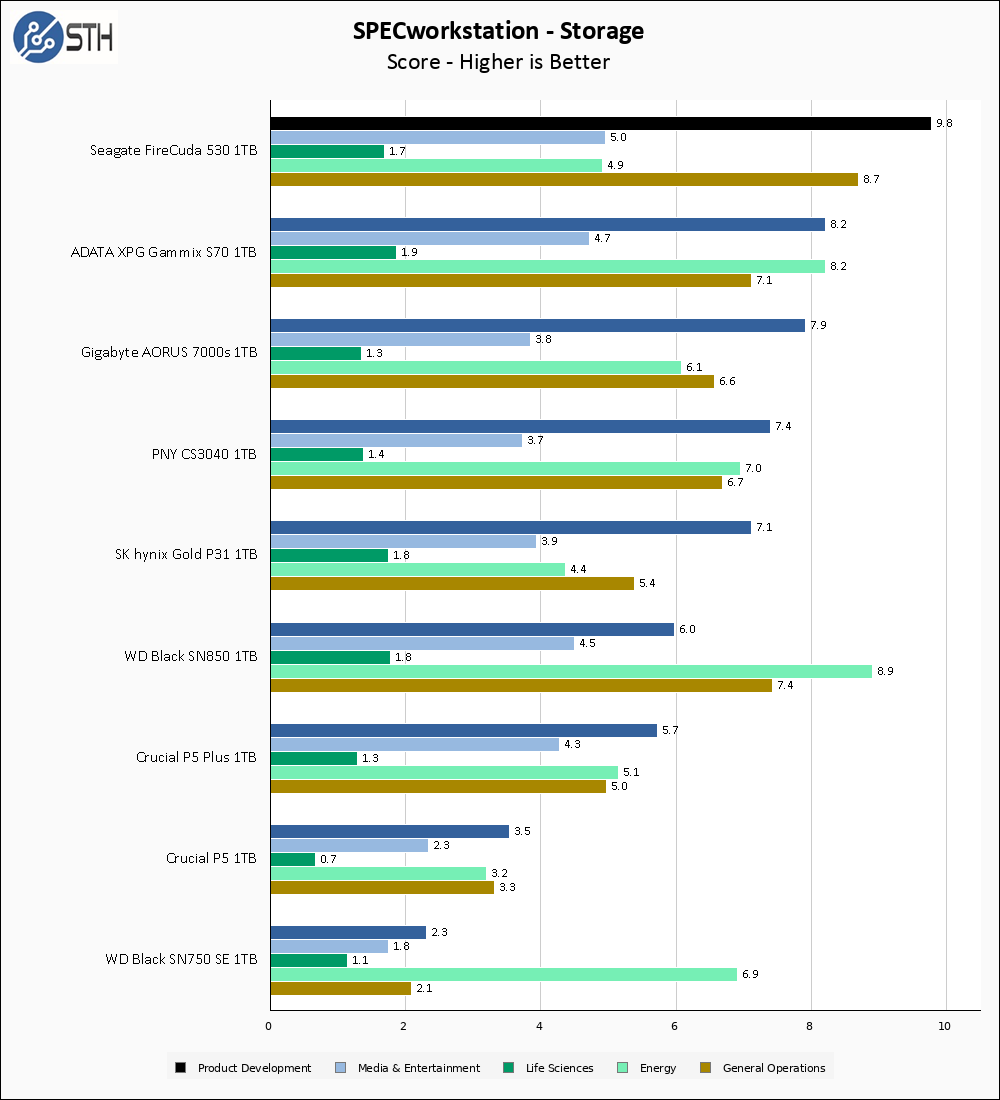
SPECworkstation performance for the Seagate FireCuda 530 is great. This drive turns in a chart-topping performance in the Product Development, Media, and General Operations sub-tests. The only test where the FireCuda 530 does not particularly excel is Energy, where it turns in a middling performance.
Sustained Write Performance
This is not necessarily a benchmark, so much as trying to catch the post-cache write speed of the drive. While I am filling the drive with data to the 85% mark with 10 simultaneous write threads, I monitor the drive for the write performance to dip to the lowest steady point and grab a screenshot.
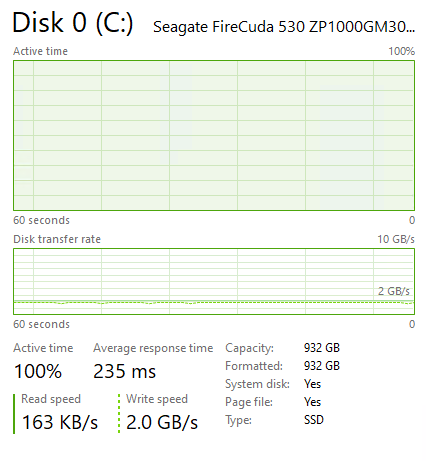
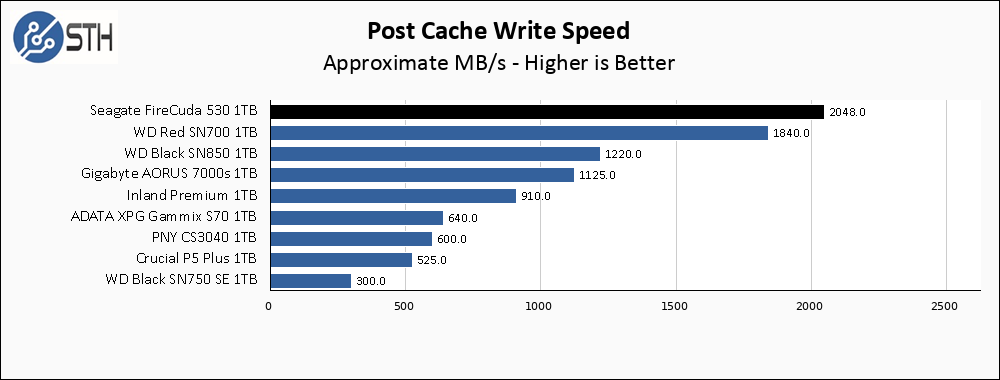
The Seagate FireCuda 530 1TB has the very best post-cache write speed I have ever tested, and actually requires a bit more explanation than the average drive. The FireCuda 530 settled into its 2 GB/s write speed very quickly during my testing, within approximately 30 seconds, and then held it for the duration of the procedure. This behavior is different than most of the drives I test, which tend to hold a high burst speed for longer but then settle down in stages to a lower sustained number. The results were so much different than how other drives have behaved that I felt compelled to double check my work on a second drive. I wish to extend my thanks to Jon Coulter of TweakTown (his review here!) who furnished me with access to his drive, where I was able to confirm this behavior with identical results.
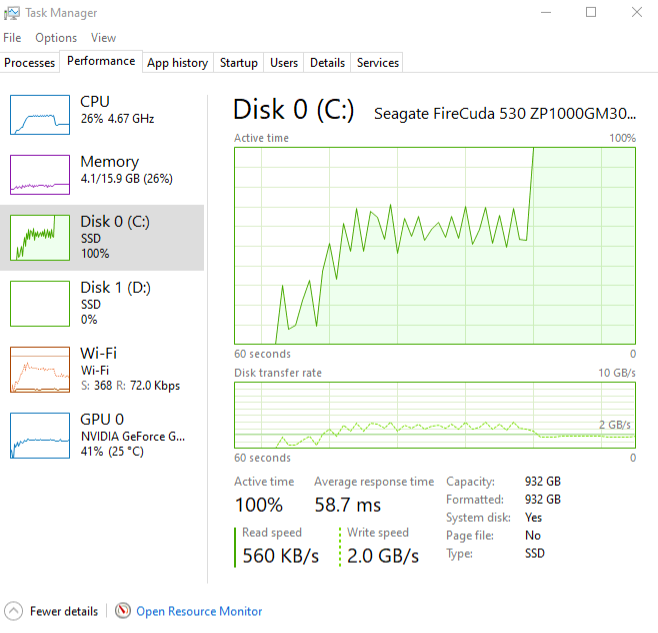
This screenshot represents the beginning of this second test, where you can see that the write speed settles to 2 GB/s in approximately 30 seconds.
I suspect this behavior is a result of the Seagate FireCuda 530 aggressively optimizing itself for sustained write behavior. Whatever Seagate has done, the results speak for themselves; post-cache write speed on the FireCuda 530 is the best consumer drive performance I have ever seen by a wide margin. The only drives I have tested in competition are the NAS-focused WD Red SN700 and the Intel Optane P5800X, neither of which target the same market segment as the FireCuda.
Temperatures
We monitored the idle and maximum temperature during testing with HWMonitor to get some idea of the thermal performance and requirements of the drive. Please keep in mind that our test bench is an open frame chassis in a 22C room, but with no direct airflow. As a result, this is not representative of a cramped low airflow case and is instead intended to model temperatures of a drive ‘on its own’.

At 55 C peak temperature, the integrated heatsink is clearly doing its job. Also contributing to this low peak write temperature is just how quickly the Seagate FireCuda 530 completed its initial data fill; at 2 GB/s sustained write it only took approximately 6 minutes to populate the drive, which is when my thermal testing typically peaks. Regardless of that caveat, the thermal results for this drive are great.
Final Words
When I first wrote this review, the Seagate FireCuda 530 1TB with the integrated heatsink was $250 on Amazon; $250 is a stupidly high price point for this drive compared to other drives in its class. It looks like Someone out there agrees with me, because between then and now the price has dropped to $210, and $170 without the heatsink. In comparison, the WD Black SN850 with the heatsink is $220, the Gigabyte AORUS 7000s is $190 and the XPG Gammix S70 is only $150. At $250 this drive is not a good value compared to the other drives, but it is an entirely different conversation at the sale price of $210. At any price point, the FireCuda 530 has proven itself a premium performer with a great warranty, so it somewhat justifies a premium price.
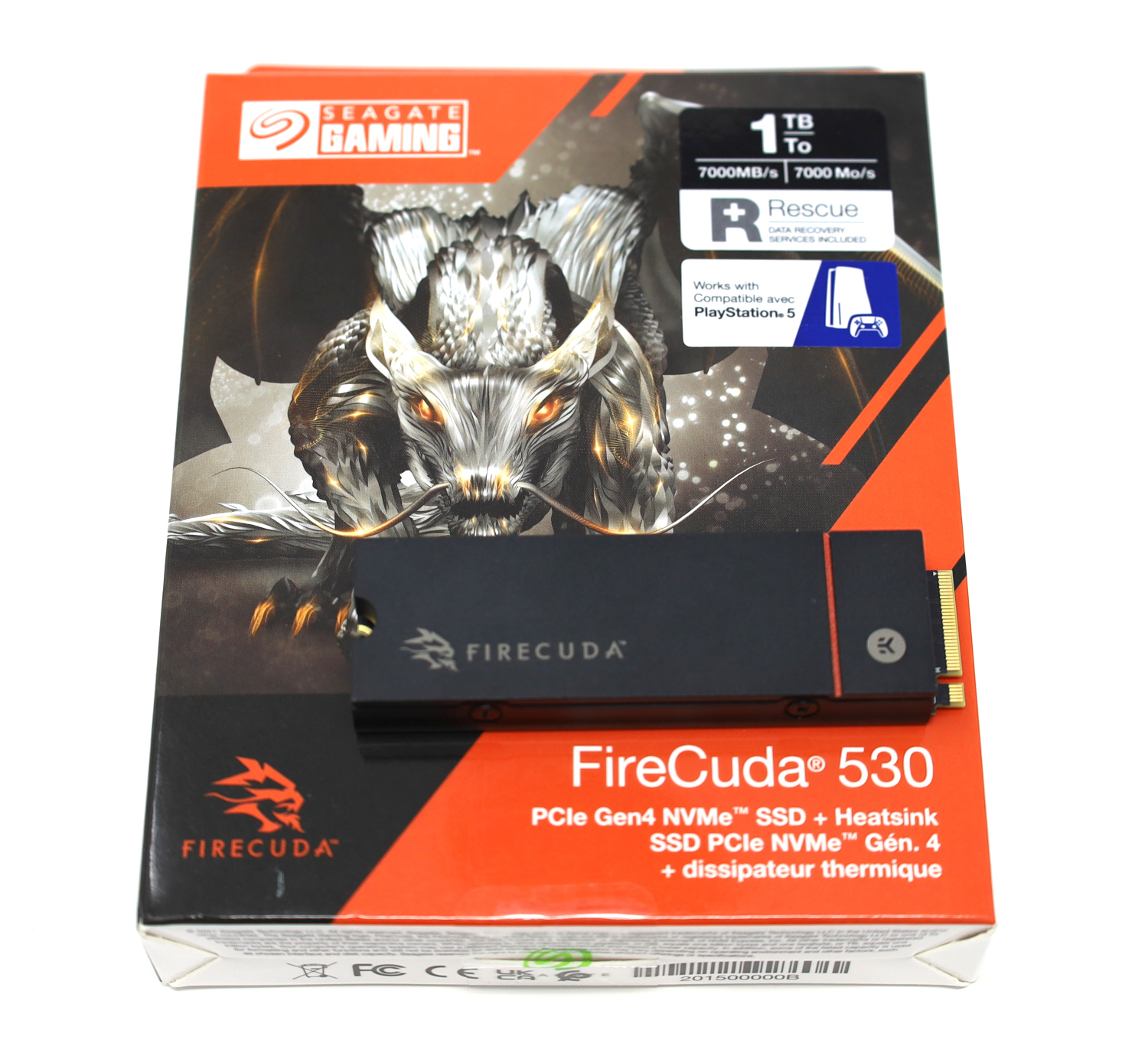
The Seagate FireCuda 530 1TB is a great SSD. It has a good warranty, very high endurance, and the best sustained write performance on the market. With the bundled heatsink, drive temperatures are also mercifully cool.
Assuming the price stays competitive with other drives, the Seagate FireCuda 530 1TB is probably my favorite SSD on the market.




I have the WD SN850 in a couple of computers, I noticed that the sequential performance deteriorated quite a lot over time. The drive now delivers less than 1600MB/s sequential read (tested with dd in linux)
Frankly, I am more impressed by the 4k Q1T1 performance. This thing delivers more than 21,000 tps in the worst case scenario!
Thanks Will for testing sustained performance!! And congratulations to Seagate, seems the hype is justified!
Echoing Steven: thanks for testing sustained write!
Weak article not at the level we expect from STH.
Benchmarking a Storage is much more complex than just run few doubtfull software and show some ridiculous windows task manager screenshot.
Running a full spectrum of disk test while you generate a controlled “noise” in the system is the way to go. Then you need to filter the results with some statistics math tool and filtering to remove uncontrolled noise on the system . No existing “commercial” benchmark doit properly.
Real case scenario must be simulated with a bit of knowledge and not just pressing start button on a benchmarking suite.
I really hope you do a more serious test when you deploy hight performance big network storage than the one you showed here.
They’re doing something different controlling noise with something that isn’t a commercial benchmark.
Diogene da Samo you just read that online and tried to copy/ paste but failed. Maybe you’re a bot and that would make more sense with your reply.
Where are Corsair models?
I’d like to see the Corsair MP600 Pro, maybe Pro XT comparison included.
I have 2 x Corsair MP 510 currently, will be upgrading MB very soon so I’m trying to decide on 2 x PCIE 4.0 M.2 drives to replace my boot and games drive.
I’ve narrowed it to either Seagate FireCuda 530 or Corsair MP600 Pro. The 530 claims tiny increase in read/write speeds whereas MP600 Pro claims up 1,200,000 IOPS vs 1,000,000 for 530.
I’m already leaning towards 530 because of higher TBW. I have decades of experience with Seagate storage drives and consider them most reliable.
Hey everyone nice forum 🙂
The real drive this competes with is the Samsung 980 pro, as these other drives are not in the same class. Seems like the 980 pro still has the edge on latency but the 530 has endurance and burst speed. This reflects Samsung poor choices for the 980pro so assuming a stronger competitor will be launched soon
May I ask what system you used to test this on? And what cache settings on Windows? I get half the 4k random 32Q1T speeds as you.